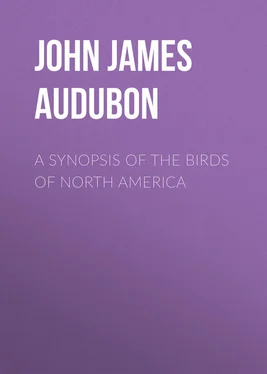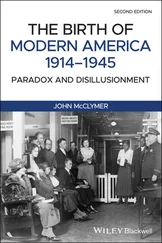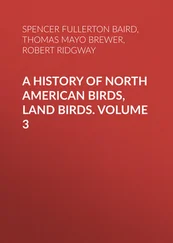John Audubon - A Synopsis of the Birds of North America
Здесь есть возможность читать онлайн «John Audubon - A Synopsis of the Birds of North America» — ознакомительный отрывок электронной книги совершенно бесплатно, а после прочтения отрывка купить полную версию. В некоторых случаях можно слушать аудио, скачать через торрент в формате fb2 и присутствует краткое содержание. Жанр: foreign_antique, foreign_prose, на английском языке. Описание произведения, (предисловие) а так же отзывы посетителей доступны на портале библиотеки ЛибКат.
- Название:A Synopsis of the Birds of North America
- Автор:
- Жанр:
- Год:неизвестен
- ISBN:нет данных
- Рейтинг книги:5 / 5. Голосов: 1
-
Избранное:Добавить в избранное
- Отзывы:
-
Ваша оценка:
- 100
- 1
- 2
- 3
- 4
- 5
A Synopsis of the Birds of North America: краткое содержание, описание и аннотация
Предлагаем к чтению аннотацию, описание, краткое содержание или предисловие (зависит от того, что написал сам автор книги «A Synopsis of the Birds of North America»). Если вы не нашли необходимую информацию о книге — напишите в комментариях, мы постараемся отыскать её.
A Synopsis of the Birds of North America — читать онлайн ознакомительный отрывок
Ниже представлен текст книги, разбитый по страницам. Система сохранения места последней прочитанной страницы, позволяет с удобством читать онлайн бесплатно книгу «A Synopsis of the Birds of North America», без необходимости каждый раз заново искать на чём Вы остановились. Поставьте закладку, и сможете в любой момент перейти на страницу, на которой закончили чтение.
Интервал:
Закладка:
Plate CLXXXIII. Male and Female.
Male with the upper parts yellowish-green, changing to ash-grey on the neck and sides of the head, to greenish-yellow on the rump; a band of greyish-white across the anterior part of the forehead, which, at the eye, separates into two bands, one extending over, the other under the eye; above this, a broadish band of black, also margining the head on either side; the inner webs and tips of the feathers of this black band pure yellow; the crown of the head, in the included space, bright orange with silky gloss; a dusky spot at the anterior angle of the eye; an obscure dusky line from the angle of the mouth to beneath the eye; quills and coverts dusky, the former margined with greenish-yellow; secondary coverts and first row of small coverts broadly tipped with yellowish-white; base of all the quills, except the four outer yellowish-white; from the seventh primary to the innermost secondary but two, a broad bar of blackish-brown; tail dusky, the feathers edged with greenish-yellow, lower parts greyish-white. Female differs chiefly in having pale yellow substituted for the flame colour of the crown, and less grey on the hind neck. Young without coloured feathers on the head.
Male , 4, 7.
Breeds in Labrador and Newfoundland. In autumn migrates to the Southern States, as far as Texas. Columbia River.
Golden-crested Wren, Sylvia Regulus, Wils. Amer. Orn. v. i. p. 126.
Regulus cristatus, Bonap. Syn. p. 91.
American Fiery-crowned Wren, Regulus tricolor, Nutt. Man. v. i. p. 420.
American Golden-crested Wren, Regulus tricolor, Aud. Orn. Biog. v. ii. p. 476.
133. 3. Regulus Calendula, Linn. Ruby-crowned Kinglet
Plate CXCV. Male and Female.
Upper parts greenish-olive, anteriorly tinged with grey, on the rump inclining to yellow; a patch of vermilion on the crown of the head; quills and tail dusky, edged with greenish-yellow; secondary coverts and first row of small coverts tipped with greyish-white, a circle of the same round the eye; lower parts greenish-white. Female similar, with the tints duller, especially the greenish-yellow of the wings. Young without the coloured patch on the crown, and more deeply tinged with yellow beneath.
Male , 41/4, 6.
Breeds in Labrador. In autumn migrates to the Southern States, as far as Texas. Abundant.
Ruby-crowned Wren, Wils. Amer. Orn. v. i. p. 83.
Regulus Calendula, Bonap. Syn. p. 91.
Ruby-crowned Wren, Sylvia Calendula, Nutt. Man. v. i. p. 415.
Ruby-crowned Regulus, Regulus Calendula, Aud. Orn. Biog. v. ii. p. 546.
GENUS II. SIALIA, Swains. BLUE BIRD
Bill of ordinary length, nearly straight, broader than high at the base, compressed toward the end; upper mandible with the dorsal line straight and slightly declinate, until near the end, when it becomes convex, the ridge narrow, the sides convex toward the end, the edges overlapping, with a distinct notch close to the narrow deflected tip; lower mandible with the angle of moderate length, and narrow, the dorsal line straight, the sides convex, the edges direct, the tip narrow. Nostrils basal, oval. Head rather large, ovate, neck short; body moderately full. Feet of ordinary length, rather slender; tarsus shorter than the middle toe and claw, its lower scutella only distinct; toes of moderate length, the first stouter, the lateral equal, the third much longer; the fourth adherent at the base; claws moderate, well curved, compressed, laterally grooved, acute. Plumage soft and blended; short bristles at the base of the upper mandible. Wings very long, pointed; the first quill very small, second, third, and fourth longest. Tail rather long, emarginate, of twelve rather strong feathers.
134. 1. Sialia Wilsoni, Swains. Common Blue Bird
Plate CXIII. Male, Female, and Young.
Male with the upper parts ultramarine blue, the lower parts light chestnut-red, excepting the abdomen, which is white. Female with the upper parts dull greyish-blue, brighter behind; lower parts as in the male, but much duller. Young with the upper part of the head, hind neck, and part of the back greyish-brown, the rest as in the female, the lower parts light grey, the feathers on the breast and sides margined with brown.
Male , 7, 10. Female , 61/2.
Generally distributed from Texas to the Fur Countries. Vast numbers spend the winter in the Southern States. Columbia River. Migratory.
Blue Bird, Sylvia Sialis, Wils. Amer. Orn. v. i. p. 56.
Saxicola Sialis, Bonap. Syn. p. 39.
Erythaca (Sialia) Wilsonii, Swains. & Rich. F. Bor. Amer. v. ii. p. 210.
Blue Bird, Ampelis Sialis, Nutt. Man. v. i. p. 444.
Blue Bird, Sylvia Sialis, Aud. Orn. Biog. v. ii. p. 84; v. v. p. 452.
135. 2. Sialia occidentalis, Townsend. Western Blue Bird
Plate CCCXCIII. Fig. 4. Male. Fig. 5. Female.
Male with the upper parts and throat ultramarine blue; fore part of back, breast, and sides, light chestnut-red; rest of lower parts light blue, the abdomen whitish. Female with the upper parts dull greyish-blue, the back tinged with brown, the wing-coverts and rump brighter; lower parts pale red, the abdomen light grey.
Male , 7; wing, 45/12. Female , 63/4.
North California, and Oregon Territory. Abundant. Migratory.
Sialia occidentalis, Western Blue Bird, Towns. Journ. Acad. Nat. Sc. Philadelphia, v. vii. p. 188.
Western Blue Bird, Sylvia occidentalis, Aud. Orn. Biog. v. v. p. 41.
136. 3. Sialia arctica, Swains. Arctic Blue Bird
Plate CCCXCIII. Fig. 2. Male. Fig. 3. Female.
Male with the upper parts light ultramarine, with a tinge of green; sides of the head, fore neck, and sides of neck, and the anterior half of the breast, light greenish-blue, that colour gradually fading into white behind. Female with the upper parts light greyish-brown, the rump and wing-coverts blue; fore part of neck and anterior portion of the breast reddish-grey, the rest of the lower parts pale brownish-grey.
Male , 71/4; wing, 47½/12. Female , 63/4; wing, 42/12.
Columbia River, Rocky Mountains, and Fur Countries. Abundant. Migratory.
Erythaca (Sialia) Arctica, Arctic Blue Bird, Swains. & Rich. F. Bor. Amer. v. ii. p. 209.
Arctic Blue Bird, Sialia Arctica, Nutt. Man. v. ii. p. 573.
Arctic Blue Bird, Sylvia Arctica, Aud. Orn. Biog. v. v. p. 38.
FAMILY XII. TURDINÆ. THRUSHES
Bill short, or of moderate length, rather strong, straight, compressed toward the end; upper mandible with its dorsal outline a little convex and declinate, the tip small, rather acute, the notches small; lower mandible with the angle rather short, of moderate width, the dorsal line straight, the sides convex, the tip acute. Head oblong, compressed, of moderate size; neck rather short; body moderate. Eyes of moderate size. External aperture of ear large and roundish. Feet of moderate strength; tarsus compressed, with seven anterior scutella; toes rather strong, compressed; first, second, and fourth, nearly equal, third much longer, and adherent to the fourth at the base; claws rather long, arched, compressed, laterally grooved, acute. Plumage rather blended. Bristles small. Wings of moderate length, broad, rounded; the first quill very small, third and fourth longest. Tail of twelve feathers, varying in length. Tongue sagittate, and papillate at the base, slender, tapering, its tip slit. Œsophagus rather narrow, without crop; proventriculus oblong; stomach a gizzard of moderate strength, its lateral and lower muscles distinct; the epithelium dense and rugous; intestine of moderate length; cœca very small, cylindrical. Trachea simple, with four pairs of inferior laryngeal muscles.
Читать дальшеИнтервал:
Закладка:
Похожие книги на «A Synopsis of the Birds of North America»
Представляем Вашему вниманию похожие книги на «A Synopsis of the Birds of North America» списком для выбора. Мы отобрали схожую по названию и смыслу литературу в надежде предоставить читателям больше вариантов отыскать новые, интересные, ещё непрочитанные произведения.
Обсуждение, отзывы о книге «A Synopsis of the Birds of North America» и просто собственные мнения читателей. Оставьте ваши комментарии, напишите, что Вы думаете о произведении, его смысле или главных героях. Укажите что конкретно понравилось, а что нет, и почему Вы так считаете.












